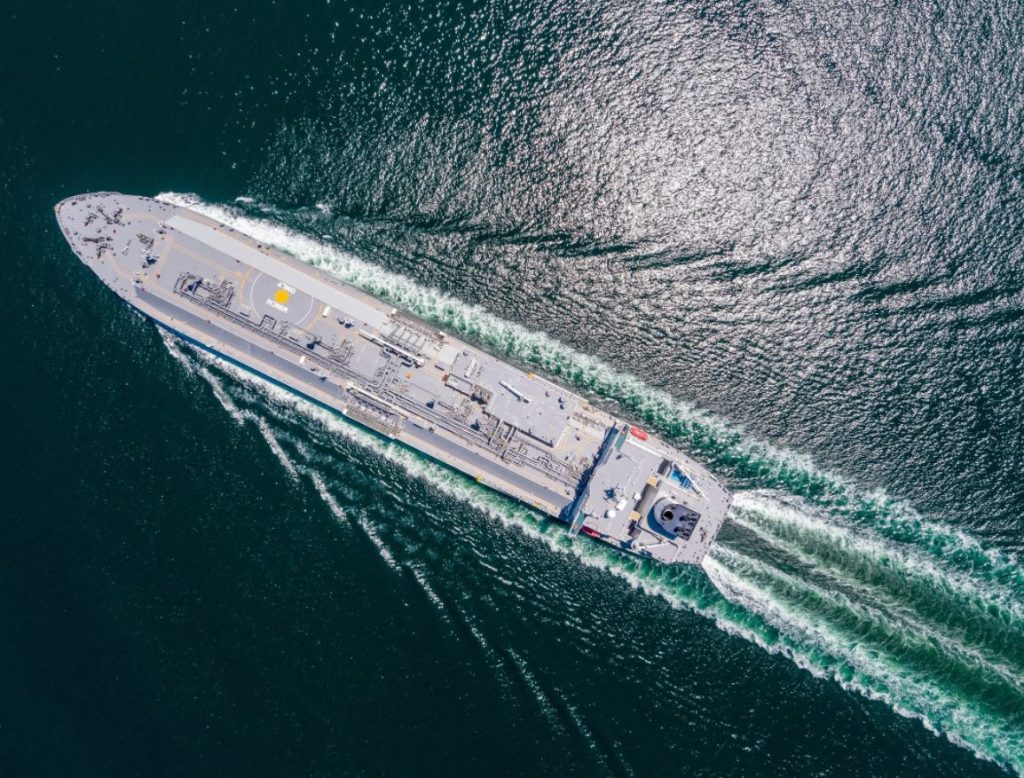Atlantic spot liquefied natural gas (LNG) freight rates increased this week, while Pacific rates dropped compared to the week before. European prices increased for the fourth week in a row.
Last week, spot LNG shipping rates remained almost flat.
“The Spark30S Atlantic spot rate increased by $3,250 per day to $53,500 per day, whilst the Spark25S Pacific rate fell by $1,500 per day to $49,250 per day,” Qasim Afghan, Spark’s commercial analyst, told LNG Prime on Friday.
“This is the fourth consecutive weekly decrease in Spark25S Pacific freight rates, and current levels are 33 percent lower than Spark25S rates this time last year,” he said.

LNG freight rates remain unaffected despite the fact that LNG carriers are still avoiding the Suez Canal due to the situation in the Red Sea and the lower LNG transits in the Panama Canal due to a drought situation.
Since January, LNG carriers, including Qatari vessels delivering LNG shipments to Europe, are favoring the Cape of Good Hope for safer passage.
Kpler previously said that the Suez Canal has witnessed no LNG transits since January 17.
Also, US LNG exports being sent round the Cape of Good Hope remain elevated in March.
Platts recently said that in March no US LNG volumes have been delivered to Asia via the Suez or Panama canals.
European prices continue upward trend
In Europe, the SparkNWE DES LNG front month rose compared to the last week.
The NWE DES LNG for April was assessed last week at $7.902/MMBtu.
“The SparkNWE DES LNG front month price for April delivery is assessed at $8.054/MMBtu and at a $0.350/MMBtu discount to the TTF,” Afghan said.
He said this is a $0.152/MMBtu increase in DES LNG price, and a $0.06/MMBtu narrowing of the discount to the TTF.
“This marks the fourth consecutive weekly increase in SparkNWE DES LNG price, and over a $0.50/MMBtu narrowing of the basis to the TTF since the start of 2024,” Afghan said.

Levels of gas in storages in Europe are at high levels following a mild winter.
Data by Gas Infrastructure Europe (GIE) shows that gas storages in the EU were 59.29 percent full on March 21. Gas storages were 59.88 percent full on March 13, and 55.60 percent full on March 21 last year.
Only third Freeport LNG train operating
US LNG exports dropped in the week ending March 20 compared to the week before mostly due to lower volumes being sent from the Freeport LNG terminal in Texas.
Freeport LNG has been operating at reduced levels since mid-January following a winter storm.
The LNG terminal operator told LNG Prime on Wednesday that its third train is currently online and producing LNG, while the “train 2 liquefaction unit is now offline and our train 1 liquefaction unit will be taken down imminently.”
This week, JKM, the price for LNG cargoes delivered to Northeast Asia, rose when compared to the last week, according to Platts data.
JKM for May settled at $9.285/MMBtu on Thursday.
Several reports recently said that buyers in China and India and other countries have been increasing purchases of spot LNG cargoes due to low prices.
Both China and India boosted their imports in January and February this year.
This is not the case with Japan that logged a decline in LNG imports for two months in a row.
State-run Japan Organization for Metals and Energy Security (JOGMEC) said in a report earlier this week that the JKM “first decreased due to demand decrease, but, increased due to the trouble of US LNG liquefaction plants.”
JOGMEC did not publish both the contract-based and the arrival-based monthly spot LNG price in January and February as there were less than two companies that imported spot LNG.

